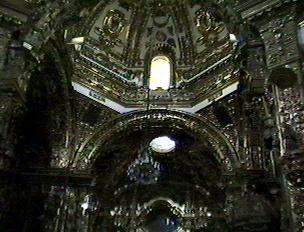
(4)
Tlaxcala is sometimes called "the Cradle of the Mexican Church". Because of the alliance between the Spaniards and the Tlaxcaltecas, the first Catholic missionaries to arrive with Cortez used Tlaxcala as their base of operations.
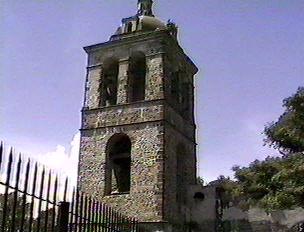
On a hillside a few blocks from the Zocalo stands the Church of San Francisco. Founded in 1525 by the first Franciscan monks in Mexico, it is one of, if not THE oldest church in Mexico. It now serves as the Cathedral of Tlaxcala.
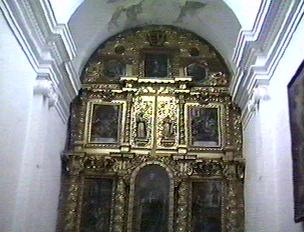
The interior of the Church of San Francisco.
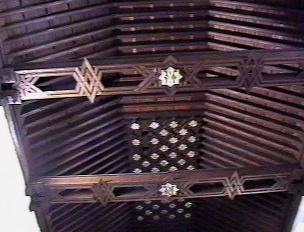
The church is noted for its wooden ceiling constructed without a single nail.
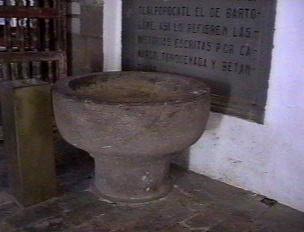
Also inside the church is the oldest baptismal font in Mexico. From this font the four chieftains of Tlaxcala were baptised.
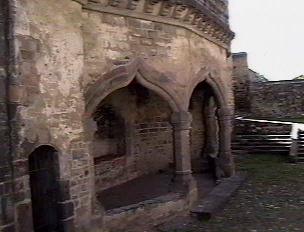
Next to the church is an open chapel. In the early years after the Spanish conquest when there were few churches and missionaries were converting the natives by the thousands, such open chapels made it possible for large crowds of converts to hear mass. (It was in this chapel that my compadres were married in 1973.)
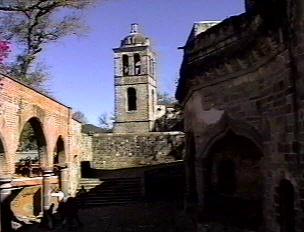
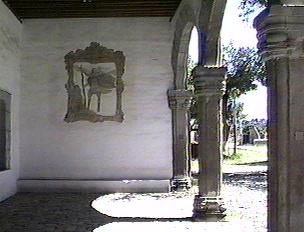
The adjoining Franciscan monastery is now the Regional Museum of the State of Tlaxcala.
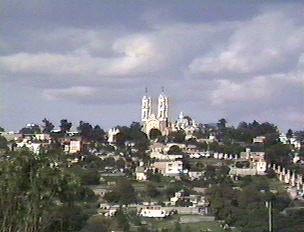
Above the city you can see the bell towers of Tlaxcala's most beautiful church, the Basilica of Ocotlán.
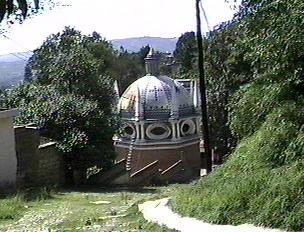
On the path leading up to the Basilica is this domed structure known as "el Pocito" (the little well). It stands over a natural spring which is venerated as miraculous. According to legend the Virgin Mary appeared to a poor Indian here. A spring of water appeared on the spot where she stood, and the water cured the Indian's family, who was dying from smallpox. Pilgrims from all over Mexico come to drink from the well. (A word of caution to tourists: In spite of the well's miraculous reputation, do not drink the water!)
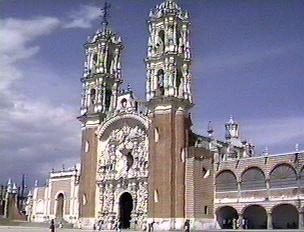
To commemorate that miracle, in the mid-1700's the Basilica of Ocotlán was built. It is a superb example of the churrigueresque (ultra-baroque) style of architecture which flourished in colonial Mexico, and is one of the most beautiful churches in a country noted for its impressive churches.
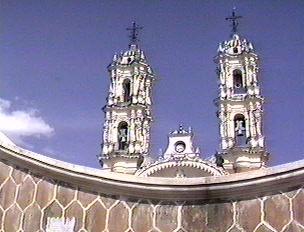
Its ornate towers of white plaster almost appear to be made of spun sugar.


The entrance to the Basilica.

The interior of the Basilica is a riot of wildly baroque decoration. The image of the Virgin on the main altar is supposedly of miraculous origen. Legend says that the statue was found inside of the trunk of a tree.
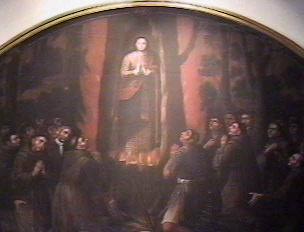
This painting depicts the legendary miracle of the discovery of the image of the Virgin of Ocotlán.
